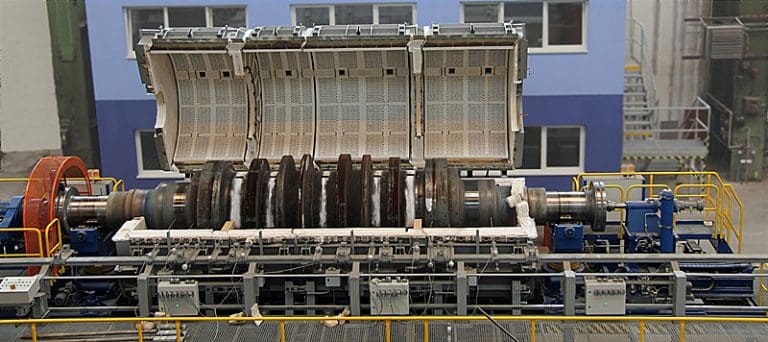
Thermal stability furnaces are critical in various industrial applications requiring high-temperature stability and precise temperature control. The temperature control system in a thermal stability furnace is a crucial component that determines the accuracy and stability of temperature conditions during operation.
This article will explore the temperature control system in thermal stability furnaces and the factors that affect its performance.
What is a Thermal Stability Furnace?
A thermal stability furnace is a device that generates and maintains a stable and precise high-temperature environment. The furnace comprises a heating chamber surrounded by insulation materials to reduce heat loss to the environment.
The heating element, typically a heating coil, generates heat transmitted through the chamber. Additionally, the furnace features temperature control systems that regulate the heating element and maintain the temperature conditions within the furnace.
Why are Thermal Stability Furnaces Important?
Thermal stability furnaces are essential in applications that require high-temperature conditions. These furnaces are designed to generate and maintain stable temperature conditions, a critical requirement in materials science, chemistry, and physics research.
For instance, synthesizing high-performance ceramics and metals requires precise temperature control, and thermal stability furnaces provide an ideal environment for these processes.
Basics of Temperature Control System
The temperature control system in a thermal stability furnace comprises several components that work together to maintain the desired temperature conditions. The heating element, usually made of ceramics or metals, generates heat, while the temperature sensor detects and measures the temperature.
The temperature controller receives signals from the temperature sensor and adjusts the heating element’s power to maintain the desired temperature conditions. The temperature controller can also switch the furnace on or off depending on the set temperature conditions.
Factors Affecting the Performance of the Temperature Control System
-
Heating Element Design:
The design of the heating element is a critical factor in the performance of the temperature control system. The heating element’s shape, size, and materials can affect its heat generation efficiency, thermal response, and durability.
-
Insulation Materials:
The insulation material used in thermal stability furnaces is essential in maintaining the desired temperature. Insulation materials with high thermal conductivity can affect the furnace’s temperature uniformity and stability.
-
Atmosphere Control:
The type of atmosphere in the furnace can affect the temperature control system’s performance. An inert gas, oxidizing, or reducing atmospheres can affect the furnace’s heating element and temperature sensor’s performance, leading to inaccurate temperature readings.
-
Temperature Sensor Type:
The type of temperature sensor used in a thermal stability furnace can affect its accuracy and response time. Common temperature sensors in thermal stability furnaces include thermocouples, resistance temperature detectors (RTDs), and thermistors.
-
Calibration:
Regular calibration of the temperature control system is essential for maintaining accurate temperature conditions. Calibration ensures that the temperature sensor and controller read and adjust the temperature accurately.
Tips for Maintaining the Temperature Control System
Proper maintenance and care of the temperature control system in thermal stability furnaces can improve its performance and lifespan. Here are some tips for maintaining the temperature control system:
-
Regular Calibration:
Regular temperature sensors and controller calibration are essential in maintaining accurate temperature conditions. Calibration should be done at least once a year or more frequently if the furnace is heavily used.
-
Clean the Temperature Sensor:
Clean the temperature sensor regularly to remove any debris or contaminants affecting its accuracy. Use a soft cloth or brush to clean the sensor, not damaging it.
-
Check the Heating Element:
Check the heating element regularly for signs of wear or damage. Cracks, corrosion, or discolouration can indicate that the heating element needs replacement.
-
Check the Insulation:
Check the insulation material regularly for wear or damage. Insulation materials with cracks or holes can affect the furnace’s temperature stability and uniformity.
Conclusion
The temperature control system is a critical component in the performance of thermal stability furnaces. The heating element, temperature sensor, and controller work together to maintain accurate and stable temperature conditions. Factors such as heating element design, insulation materials, atmosphere control, temperature sensor type, and calibration can affect the temperature control system’s performance. Proper maintenance and care of the temperature control system can improve its performance and extend its lifespan.
Are you looking for the best service provider for Thermal stability furnaces in Dubai and Riyadh?
If you implement Thermal Stability Furnace in your workplace, ‘Precision Control’ is always the best choice.
For more information about ‘Precons’,
Do call 9840930370 or Fill out our Appointment form to get in touch!♥ Follow our Social Media pages for recent updates. Facebook | Instagram